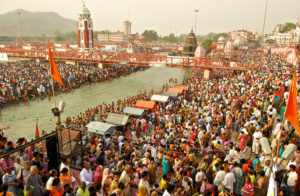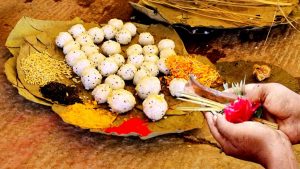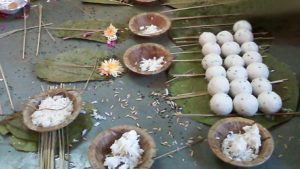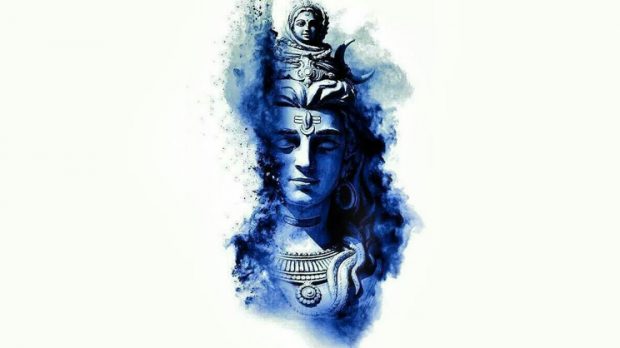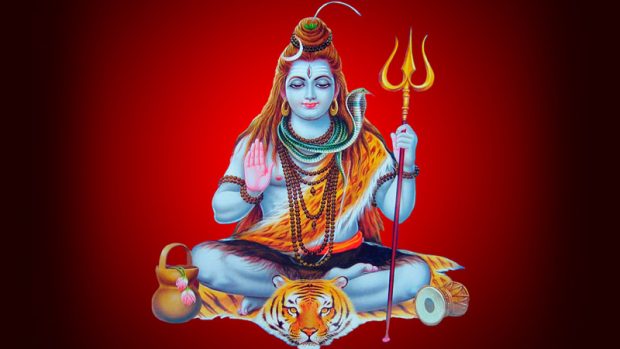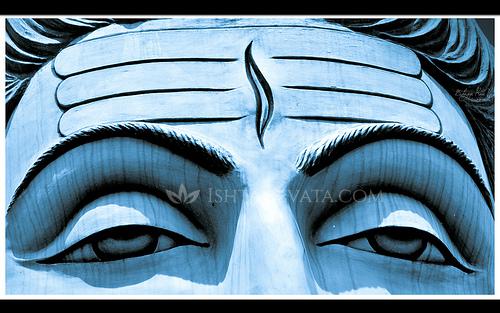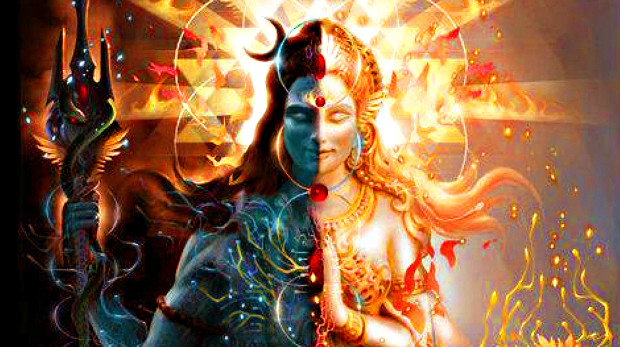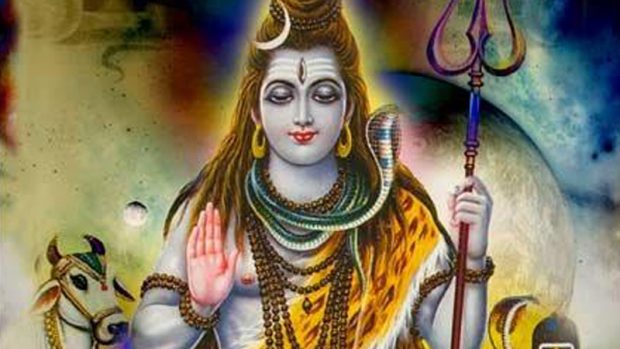Forms Of Lord Shiva
Forms Of Lord Shiva
Lord Shiva is regarded as the Supreme Being or Brahmam who takes care of the function of destruction, in the cyclical process of creation, protection, and destruction of this world. Lord Shiva is believed to bring this Universe to an end and paves way for the creation of new cycle. By doing so, the supreme Lord provides an opportunity to the unliberated souls to liberate (attain salvation) themselves from their Karma (deeds). Lord Eashwara is considered a benevolent God who is full of kindness and mercy. He also undertakes to protect his devotees from evil qualities like greed and lust, by showering them with innumerable boons and abundant wisdom.
Lord Shiva cannot be symbolised in any particular form. As per the descriptions found in Puranic tales and texts, the general perception of Lord Shiva’s appearance can be identified as below:
The unclad body covered with ashes
The unclad body symbolizes the transcendental aspect of the Lord. Most things get reduced into ashes when burned. Thus ashes symbolize the physical universe. The ashes on the unclad body of Lord Shiva signify that Lord Shiva is the primary source of everything in this universe. The entire universe emanates from him, but He transcends the physical phenomena and is not affected by it.
Matted Locks
Lord Shiva is the Master of the art of yoga. The three matted locks on the head of Lord Shiva, shows that integration of the physical, mental and spiritual energies is the ideal of yoga.
Rudraksha Maala
Rudra is another divine name of Lord Shiva. Rudra literally means “strict or uncompromising” and aksha means “eye.” The necklace made of Rudraksha which is worn by the Lord, which illustrates that he uses his cosmic laws firmly – without compromise – to maintain law and order in the universe. The necklace has 108 beads in it that symbolizes the variots elements used in the creation of this world.
Ganga
According to Hindu Mythology, Ganga (River Ganges) is the most sacred river for the Hindus in his world. The one bathing in this holy river (revered as Mother Ganga) in accordance with traditional rites and rituals, in combination with certain astrological events, is known to get freed from sins. He or she is also said to attain knowledge, purity and peace. Mother Ganga is symbolically represented on top of Lord Shiva’s head with a jet of water emanating from her mouth and falling on the ground. This signifies that Lord Shiva destroys the sins committed by a person and removes his ignorance. He also bestows virtues like knowledge, purity and peace on his devotees.
The Crescent Moon
A Crescent moon is seen adorning the head of Lord Shiva on one side, but not as an integral part of his countenance. The waxing and waning phenomenon of the moon symbolizes the period of cycle through which creation evolves from the beginning to the end. Since the god is considered the Eternal supreme power, he is beyond time. Hence the crescent moon is regarded as just one of his ornaments and does not form an integral part of him.
Three eyes
Lord Shiva is also popularly called the Tryambaka Deva. This word literally means the “three-eyed Lord”. He is the only God having three eyes: the sun is his right eye, the moon his left and the fiery fire as his third eye. The two eyes on the right and left signify his activities in the physical world, while the third eye in the center of his forehead symbolizes spiritual knowledge and power. Hence the third eye is rightly called the eye of wisdom or knowledge. Just like how the fire has the ability to bring everything down to ashes, the powerful gaze of Shiva’s third eye has the mighty power to annihilate evil from this world.
Half-opened eyes
The opening and closing of Lord Shiva’s eyes signifies a new cycle starting from creation and ending in destruction, respectively. His half-open eyes convey the idea that creation is going through this cyclic process, with no beginning and no end. Lord Shiva is considered the Master of Yoga. He uses his divine yogic power to create the universe from himself. The half-open eyes also signify this is yogic state of the Lord.
Kundalas (two ear rings)
Two Kundalas, called Alakshya (meaning “which cannot be shown by any sign”) and Niranjan (meaning “which cannot be seen by mortal eyes”) adorns the ears of the Lord. This signifies that the supreme Lord is beyond any ordinary human perception. The Kundalam of his left ear is the one that is widely used by women, while the one on his right ear is of the type used by men. These contrasting Kundalams ssymbolise that Shiva and Shakti are one and same. The right part of his body denotes Shiva and the left, his consort Shakthi Devi. It also signifies the role of Lord Shiva and Shakthi devi (male and female) in the function of creation.
A snake (Vasuki Naga)
A divine snake called Vasuki appears around the Lord’s neck, curled three times around it. The snake’s head is seen protruding from his right shoulders. The three coils of the snake symbolize the three cycles of time, namely the past, present and future. The Lord wearing the curled snake like an ornament signifies that creation proceeds in cycles and is time dependent, but the Lord Himself transcends time. The right side of the body symbolizes the human activities based upon knowledge, reason and logic. The snake looking towards the right side of the Lord signifies that the Lord’s eternal laws of reason and justice preserve natural order in the universe.
Var Mudra
The Lord’s right hand appears to be showering his divine blessings on the masses. As stated earlier, Lord Shiva annihilates evil, grants boons, bestows grace, destroys ignorance, and awakens wisdom in his devotees
Trident (Trisul)
A trident is seen next to the Lord, which stands as his mighty weapon for destructing evil and ignorance . The trident symbolizes the three fundamental powers of the Lord namely, Will (iccha), action (kriya) and knowledge (jnana).
Damaru (drum)
A small drum with two sides separated from each other by a thin neck, symbolizes the two utterly dissimilar states of existence, unmanifest and manifest. When a damaru is vibrated, it produces dissimilar sounds which are fused together by resonance to create one sound. The sound thus produced symbolizes Nada, the cosmic sound of AUM, which can be heard during deep meditation. According to Hindu scriptures, Nada is the source of creation.
Kamandalam
Kamandalam is a water pot made from a dry pumpkin, containing nectar and is seen on the ground in front of (centre) the Lord. The process of making Kamandalam has deep spiritual significance. A ripe pumpkin is plucked from the plant and its shell is removed. The fruit is then cleaned for enjoying the pure and sweet nectar. In the same way, an individual must break away from all the materialistic attachment from this physical world and clean his inner self, by shedding away his ego, in order to enjoy heavenly bliss. Ego is denoted here as the shell whereas the heavenly bliss is symbolized here by the sweet nectar.
Nandi
Nandi dev is regarded as the holy Bull, associated with Lord Shiva, who is also said to be his divine vehicle. The bull in general, symbolizes power and ignorance. Thus Lord Shiva’s use of the bull as his vehicle gives the idea that he eliminates ignorance in his world and bestows the virtue of wisdom on his devotees. The bull is called Vrisha in Sanskrit. Vrisha also means dharma (righteousness). Hence the Nandi (bull) found next to Lord Shiva also signifies that he is the eternal companion of righteousness.
Tiger skin
Tiger’s skin symbolizes potential energy or power. Lord Shiva appears to be sitting on a tiger skin and is also seen wearing one. The reason attributed to this is that even during the state of dissolution of universe, the energy still remains potential, there by serving as the source of the creation. With his Divine Will, the mighty Lord is believes to activate this potential energy for the creation of universe and its vice versa, thus resulting in endless cycles.
Cremation Ground
Lord Shiva, the god of destruction is seen sitting in the cremation ground. This signifies the belief that he is the controller of death in this physical world. The functions of birth and death are cyclic, one starts when the other ends. Therefore controlling one function indirectly implies controlling the other. Thus, Lord Shiva serves as the ultimate controller of birth and death in this material world.
Reach us to be a part of our whatsapp spiritual reminder group
